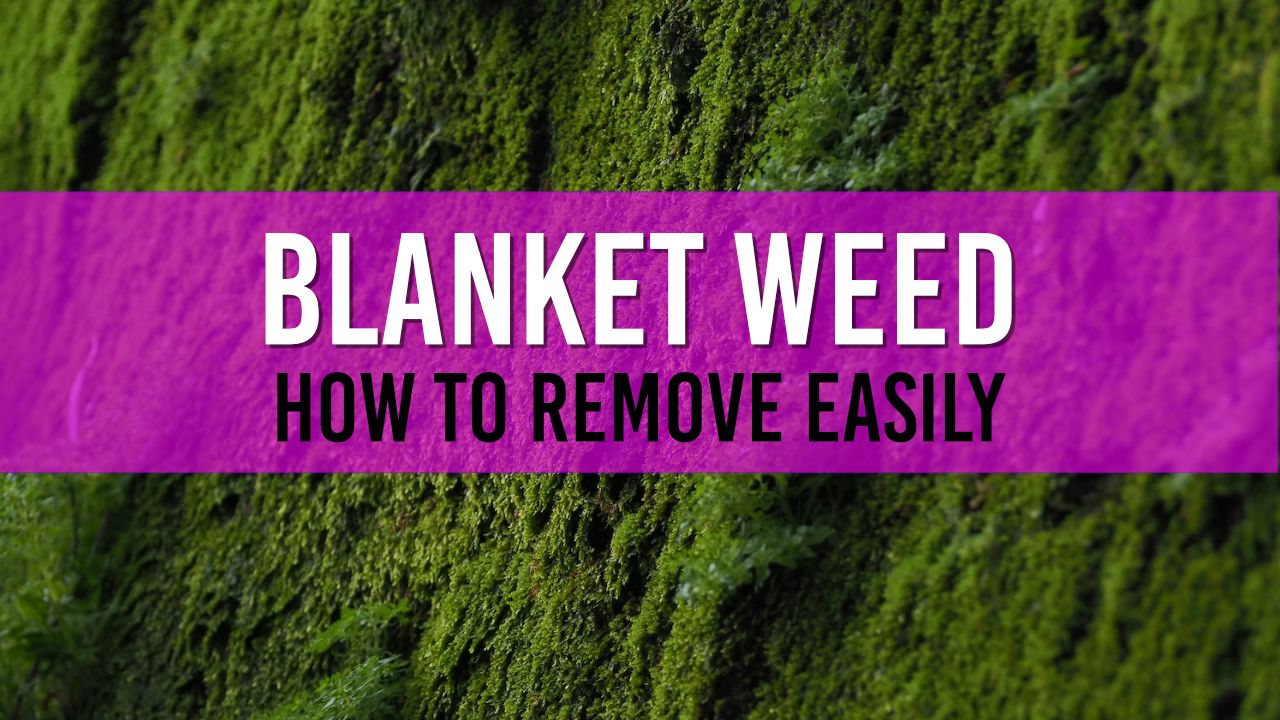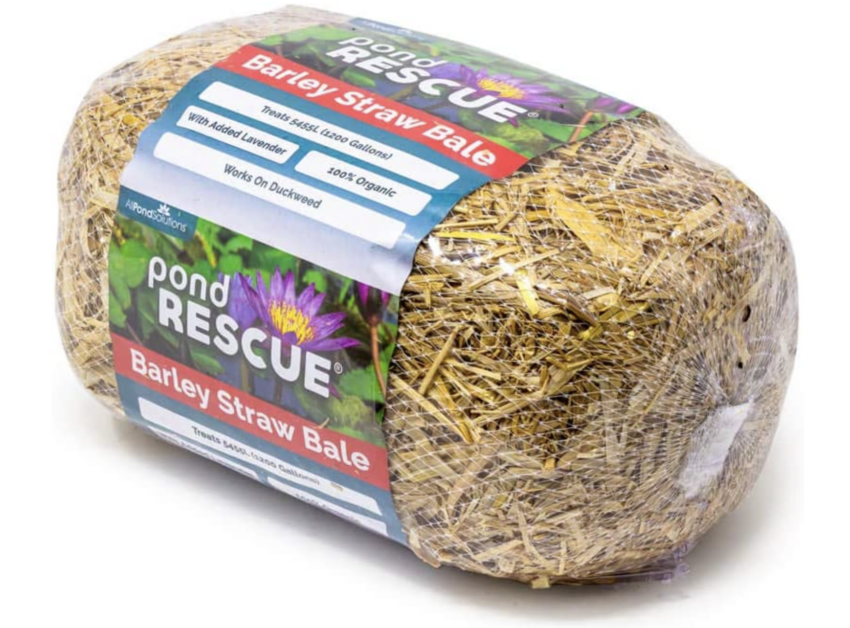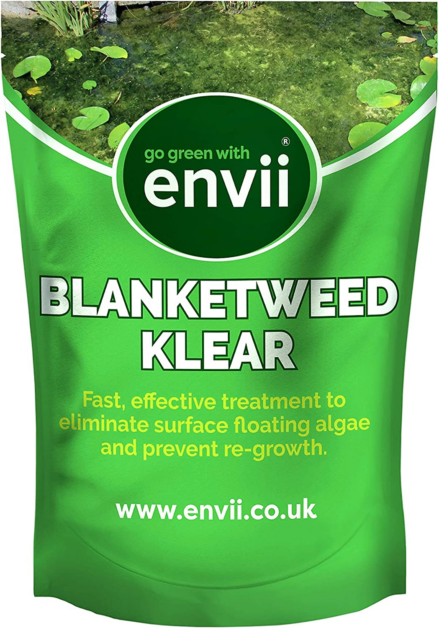How do I remove blanket weed from my pond liner?
Blanket Weed can be removed by hand, Barley Straw, or by reducing the amount of sunlight entering your pond by adding more plants. If the natural methods do not work, you can also try UV Filtration or as a last resort Chemicals.

Table of Contents
All pond owners have often experienced the dreaded green soup that greets them when they stare into their koi pond. Today I’m going to go through several methods on how to remove blanket weed from pond liners.
As a Pond Owner you know how important it is to keep it clean and healthy. One of the most common problems that pond owners face is the growth of blanket weed (also known as string algae). Blanket weed can quickly take over your pond, choking out beneficial plants and fish, and making your pond look unsightly. But don’t worry – there are several ways to remove blanket weed from your pond. In this article, we’ll explore some natural and chemical methods of removing blanket weed.
So, what is Blanket Weed?

Blanket weed, also known as string algae, is a type of filamentous algae that can grow in home ponds. It forms long, green strands that can quickly take over the surface of the water.
Why does Blanket weed spread so quickly in UK Ponds?
Blanket weed thrives in warm, sunny conditions – as most of our ponds are in direct sunlight, blanket will grow and eventually take over the entire pond.
Why is Blanket Weed bad for ponds and fish?
Blanket weed if left unchecked can be harmful to your pond’s ecosystem, as it can use up oxygen and nutrients that are needed by other plants and animals in the water.
Blanket Weed damages and clogs your pond pumps and filters
Blanket weed can overgrow and clog filters and pumps, leading to bigger problems down the line. It’s important to remove blanket weed from your pond to keep it healthy and beautiful.
Natural methods to remove Blanket Weed from Pond Liners
If you’re anything like me, using chemicals in my pond is something I often shy away from if possible. If there are natural methods of treatment I will always try them first.
Remove Blanket Weed using your hands or brush
The simplest way to remove blanket weed is to physically remove it from your pond. You can use a long-handled rake or blanketweed brush to pull the blanket weed out of the water. This method is effective, but it can be time-consuming especially if you own large pond. It’s also important to make sure you remove all the blanket weed, as any small pieces left behind can quickly regrow.
Barley Straw – The Natural Blanket Weed Prevention

Barley Straw is a great natural solution for removing blanket weed from pond liners
Another natural way to remove blanket weed is to use barley straw. Barley straw contains compounds that can prevent the growth of algae, including blanket weed. You can buy barley straw bales or pellets at your local pet shop or Amazon.
How to use Barley Straw to remove Blanket Weed
Place the barley straw in your pond and let it work its magic. It can take 4 to 5 weeks for the barley straw to start working, so be patient – however I found it’s best to pop some in your pond at the start of the year to prevent early growth.
Adding plants to block sunlight can limit blanket weed growth
Adding more plants to your pond can also help to remove blanket weed. Aquatic plants like water lilies and duckweed can provide additional shade to your pond water, reducing the amount of sunlight that reaches the blanket weed. This can slow down its growth and make it easier to remove.
Using Chemical to Remove Blanket Weed
In some situations, Chemical pond treatment may be required to kill off blanket weed. There are a few “off the shelf” chemicals which offer solutions to removing blanket weed. I would highly stress to check the labels of the chemicals to see what potential impact it may have on your pond life (or local wildlife).
One of the major benefits of using Chemicals for blanket weed removal is how much faster it is to produce results when compared to natural solutions.
Algaecides – Aglae & Blanket Weed Treatment

Algaecides are chemicals that kill algae, including blanket weed. They come in liquid or granular form and are easy to apply. Simply follow the instructions on the packaging to apply the algaecide to your pond.
Be sure to wear protective gloves and goggles when applying algaecides, as they can be harmful to your skin and eyes.
⚠️ Copper Treatments for Blanket Weed Removal ⚠️
Copper treatments are another chemical option for removing blanket weed. Copper ions can kill algae, but they can also be harmful to fish and other aquatic life. If you decide to use copper treatments, be sure to follow the instructions carefully and avoid over-treating your pond.
How adding a UV Lamp to your Filtration system can kill blanket weed

UV sterilizers use ultraviolet light to kill algae, including blanket weed. They’re effective, but they can be expensive and require a power source. For those of you that have read my recent article on pond running costs should know that UV Lights are my current most expensive running cost for my pond.
Conclusion
Removing blanket weed from your home pond can be a challenging task, but there are several effective methods available listed above.
I personally recommend trying natural methods first, such as:
- Remove Blanket Weed using your hands
- Barley Straw
- Adding more plants such as lilies or duckweed to block sunlight
Natural blanket weed removal methods are generally safer for your pond’s ecosystem and can often be just as effective as chemical treatments. However, if natural methods aren’t providing the desired results, chemical treatments can be used as a last resort.
Whichever method you choose, be patient and persistent, as removing blanket weed can take time and effort. By maintaining good water quality and taking preventative measures, you can keep your pond liner free of blanket weed and enjoy a beautiful, healthy environment for both your fish and surrounding wildlife.

